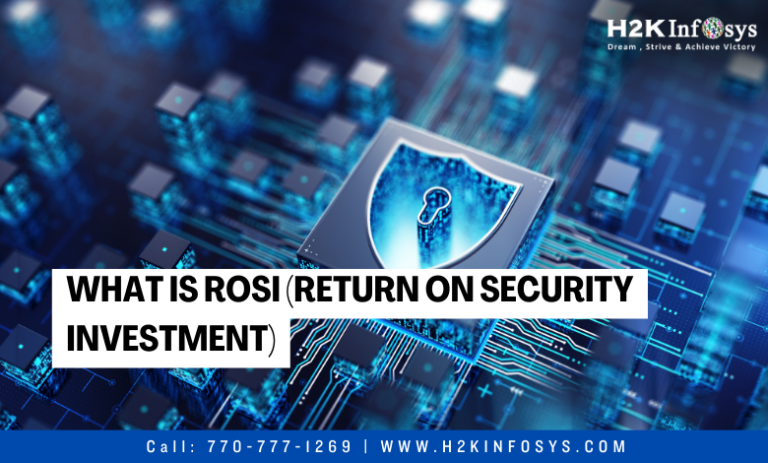The value obtained from an investment is referred to as return on investment, or ROSI. An investment that yields a high return on investment (ROI) adds greater value to the organisation than an equivalent investment with a lower ROI.
The ROI of investments in cybersecurity projects is precisely measured by Return on Security Investment, or ROSI. An organisation must invest in security, but many security teams find it difficult to measure the return on that investment. To learn more, check out the cybersecurity training course online.
Why Is It Essential to Measure ROSI?
Companies encounter an extensive array of cybersecurity hazards, such as supply chain intrusions and ransomware. Even while the company may agree that some security spending is required to control cyber risk and stop cyberattacks, it could be challenging to decide where to put money or for a security lead to show how previous expenditures have paid off.
There are several reasons why it’s critical to quantify the value of cybersecurity, including:
- Justifying Past Investments: Security leads can convince management and the board that money was effectively spent by calculating the return on security investments made in the past.
- Demonstrating the Need for Future Investment: One way to support the need for future investment is by calculating the possible return on security investments that are being suggested.
- Strategic Security Investment: Analysing potential investments’ return on investment (ROSI) can help executives choose the solutions that offer the greatest potential benefit to the organisation.
How is ROSI Calculated?
The return on investment (ROSI) of a security investment is measured for an organisation. Generally speaking, this can be computed as:
RoSI = (Benefits of Security Investment – Cost of Security Investment) / Cost of Security Investment
The cost of a security investment is comparatively simple to calculate in this case. It is more challenging to quantify the possible advantages, though. The change in the Annual Loss Expectation (ALE) connected to a securities investment can be used as a basis for one assessment of this.
ALE calculates the overall estimated financial losses resulting from a specific cybersecurity threat each year. It is computed as:
ALE = ARO * SLE
The acronym ARO denotes the Annual Rate of Occurrence in this equation. This represents the estimated annual frequency of a specific kind of security incident. For instance, an organisation will have an ARO of 0.2 for this security risk if there is a 20% annual possibility of a distributed denial-of-service (DDoS) attack. ARO can be calculated using historical cybersecurity data for the company or for businesses that are comparable to it in the same sector.
The other figure, Single Loss Expectancy (SLE), calculates the entire expense incurred by the company from a single incident of this cybersecurity risk. This value should account for both direct and indirect costs to the firm, such as lost sales and remediation expenses as well as missed productivity. This can also be approximated using historical company or industry data, just like ARO.
Once a security incident’s ALE has been determined, the benefit of a security solution can be calculated using the expected decrease in ALE. This may result from a drop in:
- ARO: Investing in security can lower or even completely eliminate the chance that a specific security incident will transpire.
- SLE: By enabling quicker cleanup or lessening the effect of the security incident, the investment may lower SLE.
A security team can compute ROSI and determine the benefit to the organisation by assessing the impact of the investment on ALE.
How to Raise the Return on Investment in Security
The goal of the security department should be to optimise ROI, just like any other department in the company. Among the strategies to raise ROSI are:
- Risk analysis: Where there is a high level of unmanaged cybersecurity risk, a company is likely to see the highest return on investment (ROSI). These areas where the business can get the most leverage can be found by doing a risk assessment.
- Strategic Solution Selection: The company is able to determine which security solutions have the highest potential return on investment (ROSI) based on the risk assessment. These remedies may lessen the probability of an incident, its consequences, or the efficiency and quickness of incident response.
- Focus on Prevention: In cybersecurity, prevention is always preferable than detection and reaction. Security solutions that prevent attacks from happening reduce risk and its effects on the company, whereas detection and response tools simply expedite damage repair once it has already occurred.
Conclusion A company cybersecurity program’s success depends on maximising return on investment. Increasing the corporate security operations centre’s (SOC) efficiency is one of the best approaches to do this. Through the removal of manual procedures and the centralization of corporate security tool visibility and control, an organisation decreases the operational expenditure (OpEx) of the corporate SOC. Check out the cyber security online training to learn more.






























